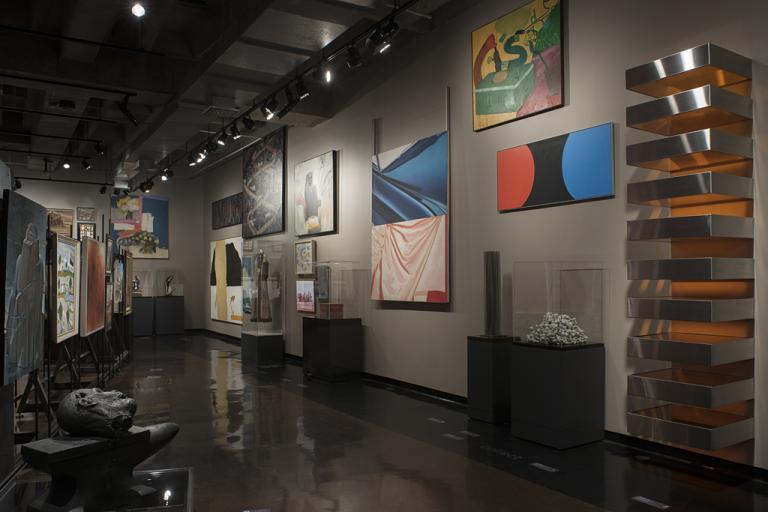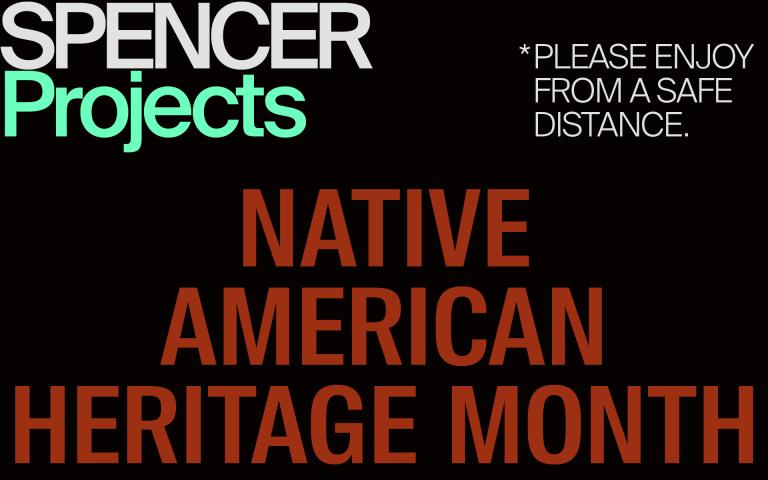Self Surrender (#1242), Emmi Whitehorse
Artwork Overview
Canvas/Support (Height x Width x Depth): 104.2 x 134.6 cm
Canvas/Support (Height x Width x Depth): 41 x 53 in
If you wish to reproduce this image, please submit an image request
Images
Label texts
Native American artist Emmi Whitehorse writes about her work: “I have chosen to focus on nature, on landscape. My paintings tell the story of knowing land over time…. I am defining a particular space, describing a particular place. They are purposefully meditative and meant to be seen slowly. The intricate language of symbols refers to specific plants, people, and experiences."
Take a few moments to look carefully at Whitehorse’s work. Where do you see a landscape? How is this different from other landscapes you have seen? Try creating your own landscape using mostly color and shape.
Emmi Whitehorse says the colors of her paintings come from the colors her grandmother used in her weavings. In earlier works she used images and forms derived from her family experiences, but gradually these forms became more abstract and more suggestive of landscapes. By the time this painting was completed, her work was completely abstract.
Native American artist Emmi Whitehorse writes about her work: “I have chosen to focus on nature, on landscape. My paintings tell the story of knowing land over time—of being completely, micro-cosmically within a place. I am defining a particular space, describing a particular place. They are purposefully meditative and mean to be seen slowly. The intricate language of symbols refer to specific plants, people, and experiences." (Tap the Web icon to watch Whitehorse talk about her work).
Take a few moments to look carefully at Whitehorse’s work. How do you see the landscape emerge?
Native American artist Emmi Whitehorse writes about her work: “I have chosen to focus on nature, on landscape. My paintings tell the story of knowing land over time—of being completely, micro-cosmically within a place. I am defining a particular space, describing a particular place. They are purposefully meditative and mean to be seen slowly. The intricate language of symbols refer to specific plants, people, and experiences."
Take a few moments to look carefully at Whitehorse’s work. How do you see the landscape emerge?
Emmi Whitehorse was born in Crownpoint, New Mexico and attended a government boarding school for Navajo girls. She earned a B.A. in painting and an M.A. in printmaking from the University of New Mexico and lives and works in Santa Fe.
Whitehorse says the colors of her paintings come from the colors her grandmother used in her weavings. In earlier works she used images and forms derived from her family experiences, but gradually these forms became more abstract and more suggestive of landscapes. By the time this painting was completed, her work was completely abstract.
Emmi Whitehorse was born in Crownpoint, New Mexico and attended a government boarding school for Navajo girls. She earned a B.A. in painting and an M.A. in printmaking from the University of New Mexico and lives and works in Santa Fe.
Whitehorse says the colors of her paintings come from the colors her grandmother used in her weavings. In earlier works she used images and forms derived from her family experiences, but gradually these forms became more abstract and more suggestive of landscapes. By the time this painting was completed, her work was completely abstract.
Emmi Whitehorse says the colors of her paintings come from the colors her grandmother used in her weavings. In earlier works she used images and forms derived from her family experiences, but gradually these forms became more abstract and more suggestive of landscapes. By the time this painting was completed, her work was completely abstract.
Emmi Whitehorse was born in Crownpoint, New Mexico and attended a government boarding school for Navajo girls. She earned a B.A. in painting and an M.A. in printmaking from the University of New Mexico and lives and works in Santa Fe.
Whitehorse says the colors of her paintings come from the colors her grandmother used in her weavings. In earlier works she used images and forms derived from her family experiences, but gradually these forms became more abstract and more suggestive of landscapes. By the time this painting was completed, her work was completely abstract.
Emmi Whitehorse was born in Crownpoint, New Mexico and attended a government boarding school for Navajo girls. She earned a B.A. in painting and an M.A. in printmaking from the University of New Mexico and lives and works in Santa Fe.
Whitehorse says the colors of her paintings come from the colors her grandmother used in her weavings. In earlier works she used images and forms derived from her family experiences, but gradually these forms became more abstract and more suggestive of landscapes. By the time this painting was completed, her work was completely abstract.
Exhibition Label:
"American Indian Art at the Spencer Museum," 6-Sep-2003 to 19-Oct-2003, Andrea Norris
Emmi Whitehorse was born in Crownpoint, New Mexico and attended a government boarding school for Navajo girls. She earned a B.A. in painting and an M.A. in printmaking from the University of New Mexico and lives and works in Santa Fe.
Whitehorse says the colors of her paintings come from the colors her grandmother used in her weavings. In earlier works she used images and forms derived from her family experiences, but gradually these forms became more abstract and more suggestive of landscapes. By the time this painting was completed, her work was completely abstract.











